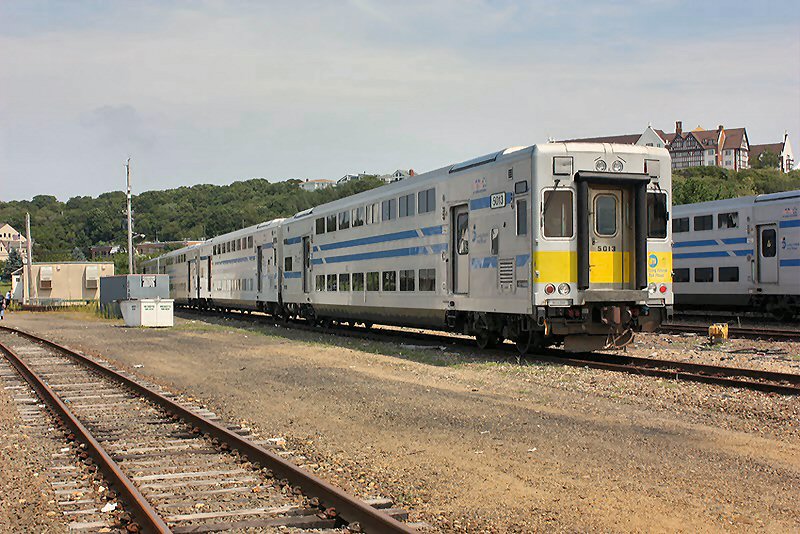LIRR doesn't even like the C3's. They're getting wholesale-replaced by MLV's in a combo order with Metro North's Shoreliner-to-MLV replacement; LIRR will not attempt a rebuild. Too finicky and maintenance-intensive, and the rebuild costs didn't wash. And of course they're useless on low platforms so not a single other railroad--least of all SEPTA--can make use of them. Kawasaki's MBTA and MARC bi-levels were by far the more successful lineage, and if they make another market entry into Penn-clearance bi's it's going to be based off of a shrunken version of those instead of the C3's. Attempting to rebuild those with trap doors for low platforms is going to be more expensive than buying new; they're an evolutionary dead end.
The last Comets produced were the Comet V's in 2002. Bombardier, which either produced itself or bought the manufacturers of every previous generation of Comets, got out of the new single-levels business after the Comet IV's in '96 because their profit margins are so much better on bi-levels. The Alstom-built Comet V's were not very good cars; lots of door problems and software glitches. NJT is getting rid of those at the end of its aggressive single-level purge procurements with all the others because they're too much of a pain despite their fresher age.
Despite the numbers of used single-level coaches hitting the used market, there won't be many at all where the rebuild costs are going to be at all worth it vs. buying new. The Comet III's are toast, the II's and derivatives are showing serious age, the last of the rebuildable I's have already been snapped up by carriers in low-platform territory, and the last "good" generation of them (IV's and derivatives) is nearing the 20-mark of a lot of daily pounding. There are no manufacturers producing new lookalikes, and fewer qualified manufacturers dabbling in single-level rebuild programs or making cost-effective bids on rebuild programs when their margins are much better getting in on the first mass wave of bi-level rebuilds. The free market has spoken here. There's very good reason why NJT, MNRR, and the MBTA--the 3 carriers with over five-sixths of the continental roster of single-level commuter coaches--are all going 100% bi-level by the year 2025. The only other (non-SEPTA) commuter rail users of single-level coaches are MARC (34 MARC IIB's, circa-1991/rebuilt 2009), CDOT/Shore Line East (33 Mafersas, circa-1992), UTA FrontRunner (25 recently remanufactued Comet I's), and AMT (24 Comet II's, circa-1989). MARC and AMT are likewise in aggressive purge mode in favor of MLV's, so they will probably be 100% bi-level too by decade's end. They're not economical fleets to support through any new procurement or rebuild cycles, and they're going to be outright rare in daily service in 10 short years. And rare for fresh parts availability. Extinction, when it happens, is going to come with breathtaking speed on commuter rail until single-level coaches are strictly the realm of intercity carriers.

